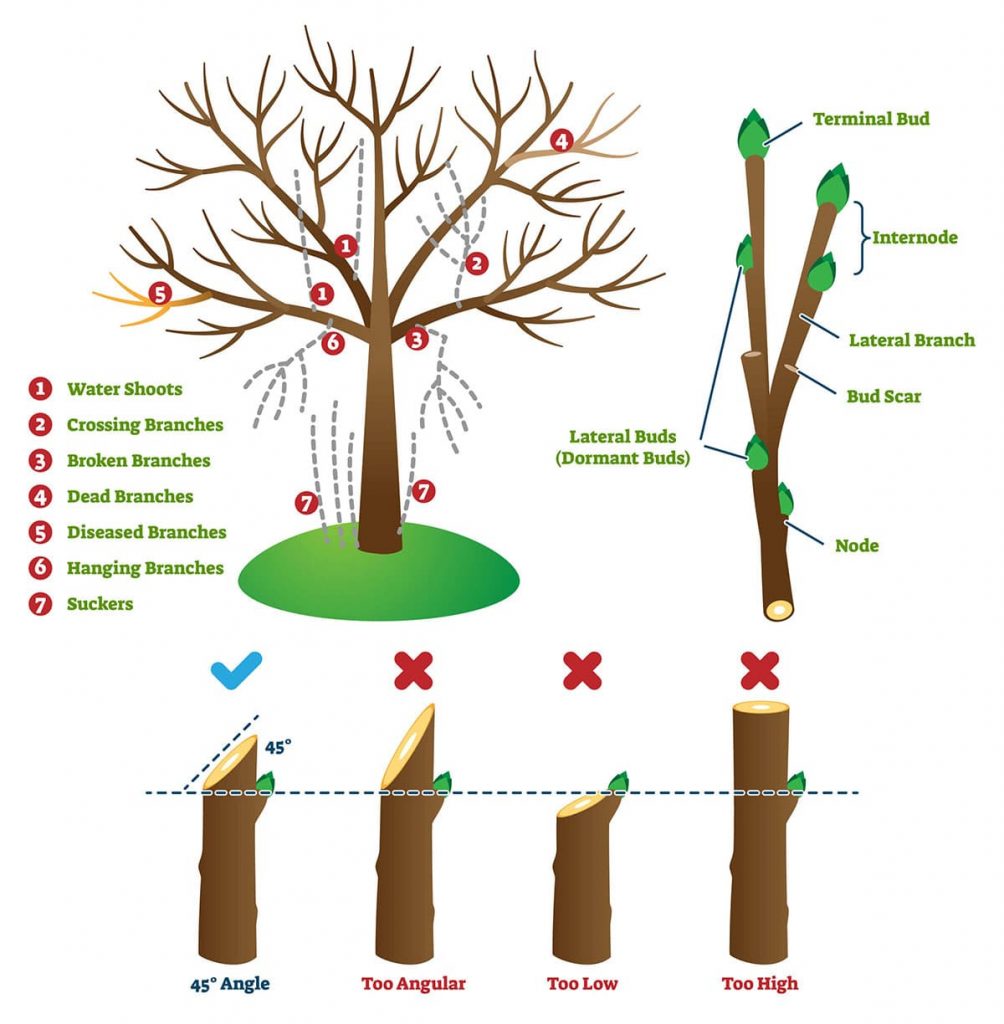How to Prune Fruit Trees for Optimal Growth

Imagine you're an artist, standing before a blank canvas. Now, picture your fruit tree as that canvas. Pruning is your brush, and with the right techniques, you can create a masterpiece that yields a bountiful harvest. But where do you begin? How do you prune fruit trees for optimal growth? Let's dive in and unlock the secrets to a fruitful garden.
Understanding the Basics of Pruning
Pruning is more than just cutting branches; it's a delicate balance between art and science. The goal is to encourage optimal fruiting while maintaining tree health. Think of it as a haircut for your tree—it promotes growth, removes dead or diseased parts, and shapes the tree for better sunlight exposure.
Why Prune Fruit Trees?
Pruning isn't just about aesthetics. It serves several crucial purposes:
- Encourages Fruit Production: By removing excess branches, you direct the tree's energy towards producing larger, healthier fruits.
- Improves Air Circulation: Proper pruning allows air to flow freely, reducing the risk of disease.
- Enhances Sunlight Exposure: Sunlight is essential for photosynthesis. Pruning ensures that all parts of the tree get enough light.
- Maintains Tree Structure: Regular pruning helps shape the tree, making it easier to harvest fruits and maintain overall health.
Essential Pruning Techniques
When to Prune
Timing is everything in pruning. The best time to prune most fruit trees is during late winter or early spring, just before new growth begins. This is when the tree is dormant, making it easier to see the structure and identify any dead or diseased branches.
Tools of the Trade
Before you start, make sure you have the right tools:
- Pruning Shears: For smaller branches.
- Loppers: For branches up to 1.5 inches in diameter.
- Pruning Saw: For larger branches.
- Gloves: To protect your hands.
Step-by-Step Guide to Pruning
1. Remove Dead or Diseased Branches
Start by removing any branches that are dead, diseased, or damaged. These can harbor pests and diseases, affecting the overall health of your tree.
2. Cut Back Crossing Branches
Branches that cross or rub against each other can cause damage and reduce airflow. Remove the weaker branch to prevent this.
3. Prune for Shape and Structure
Next, focus on shaping the tree. For most fruit trees, an open center or vase shape is ideal. This allows sunlight to reach all parts of the tree and improves air circulation.
4. Encourage New Growth
Make cuts just above a bud or branch. This encourages new growth and helps maintain the tree's shape.

Advanced Pruning Techniques
Heading Cuts vs. Thinning Cuts
- Heading Cuts: These are made just above a bud or branch. They encourage new growth and are used to shape the tree.
- Thinning Cuts: These remove entire branches, reducing the overall size of the tree and improving airflow.
Espalier Pruning
Espalier is a technique where the tree is trained to grow flat against a wall or trellis. This is great for small spaces and can create a stunning visual effect. It involves careful pruning and training of branches to grow in a specific pattern.
Fruit Tree Maintenance Tips
Post-Pruning Care
After pruning, it's essential to take care of your tree:
- Seal Large Cuts: For cuts larger than 1 inch in diameter, apply a pruning sealant to prevent disease.
- Clean Your Tools: Clean your pruning tools with a disinfectant to prevent the spread of disease.
- Water and Fertilize: Ensure your tree gets enough water and nutrients to support new growth.
Regular Inspections
Regularly inspect your tree for signs of disease or pests. Early detection can prevent significant problems down the line.

Conclusion
Pruning fruit trees for optimal growth is a rewarding endeavor. With the right techniques and a bit of patience, you can transform your fruit trees into thriving, productive members of your garden. Remember, pruning is about more than just cutting branches—it's about nurturing growth, enhancing health, and shaping the future of your tree.
So, are you ready to pick up your pruning shears and create a masterpiece? Your fruit trees are waiting, and with these tips, you're well on your way to a bountiful harvest.
FAQs
When is the best time to prune fruit trees?
- The best time to prune most fruit trees is during late winter or early spring, just before new growth begins.
What tools do I need for pruning?
- You'll need pruning shears, loppers, a pruning saw, and gloves.
How do I know which branches to remove?
- Start by removing dead, diseased, or damaged branches. Then, remove crossing branches and shape the tree for optimal sunlight exposure and air circulation.
What is the difference between heading cuts and thinning cuts?
- Heading cuts are made just above a bud or branch to encourage new growth. Thinning cuts remove entire branches to reduce the tree's size and improve airflow.
How do I care for my tree after pruning?
- Seal large cuts, clean your tools, and ensure your tree gets enough water and nutrients to support new growth. Regularly inspect your tree for signs of disease or pests.
By following these guidelines, you'll be well on your way to mastering the art of pruning fruit trees for optimal growth. Happy gardening!
0 Response to "How to Prune Fruit Trees for Optimal Growth"
Post a Comment